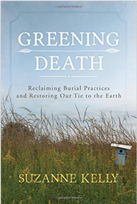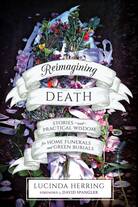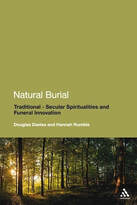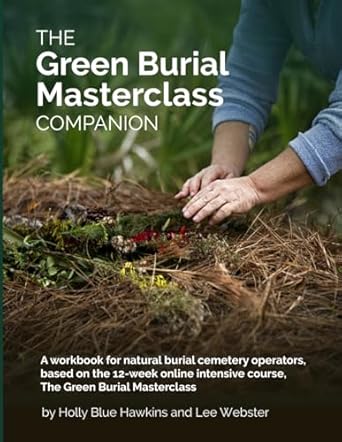Media Library
Welcome to the GBC collection of recommended reading, videos, podcasts, interviews, and blogs. In addition to the videos listed here, original videos can be found on the GBC YouTube channel. Also, more articles dating back to 2013 are listed in the Articles Archive.
Videos, Podcasts, and Interviews
Deeply Rooted Conservation Burial Alliance
Wish You Were Here home care and green home burial by Michael Judd
The Natural Burial Experience Lee Webster
Cremation Curious Lee Webster
The Underground Truth About Vaults Lee Webster
Environmental Justice in the Natural Burial Cemetery Lee Webster
Dead and Buried: a Natural Burial Project for Children Dr. Hannah Rumble and Charlotte Chapman
Green Burials with the Green Burial Council Lee Webster and Ed Bixby
Green Burial: How Natural Burials Help the Planet Now This
How to Be a Grave Digger Atlas Obscura
Larkspur Conservation with John Christian Phifer
Renew the Land with Your Burial Carolina Memorial Sanctuary
Eco-Friendly Green Burials Catching On in the US Stephen P. Johnson
Penn Forest Natural Burial Park Pete McQuillin
Congressional Cemetery Goats Congressional Cemetery
Green Burial Greenhaven Preserve
Dust to Dust: Gilbert Becker's Green Burial Green Acres Natural Cemetery
Steelmantown Ed Bixby
Dying Green Ramsey Creek
Tennessee ‘Natural’ Burial Ground Will Offer A Simpler Farewell — Casket Optional NPR
A Burial Practice That Nourishes the Planet Caitlin Doughty
The Green Burial of Steve Sall Manual Valdes
Natural Burials and Green Funeral Shari Wolf
Green Burial KQED Quest
What is a Green Burial? Joe Sehee
A Will for the Woods Amy Browne
Saving One Million Acres Dr. Billy Campbell
Green Burial and Land Conservation Brandy Gallagher
Natural Burial/Catholic Services Gearty-Delmore
Unexpected Facts About Green Burial TalkDeath with Joe Sehee and Caitlin Doughty
How to Have a Green Funeral TalkDeath with Joe Sehee and Katrina Spade
#TalkDeath Episode 5: Who Owns Your Body with Tanya Marsh and Lee Webster
We Need to Change How We Bury the Dead Dean Peterson
More Canadians Choosing Green Burial Willow's Rest
Bonus Episode: 3 ½ Feet Under with Lee Webster
Radio Interview with Anne Weston of Green Burial Project of NC
Creative Mornings Radio with Cassie Barrett of Carolina Sanctuary, NC
Podcast: FuneralRadio featuring Joe Sehee, Char Barrett and more
Podcast: Connecting Directors, Going Green Episode with Darren Crouch
Podcast: Light at the End, Exploring Green Burial with Emily Miller
Wish You Were Here home care and green home burial by Michael Judd
The Natural Burial Experience Lee Webster
Cremation Curious Lee Webster
The Underground Truth About Vaults Lee Webster
Environmental Justice in the Natural Burial Cemetery Lee Webster
Dead and Buried: a Natural Burial Project for Children Dr. Hannah Rumble and Charlotte Chapman
Green Burials with the Green Burial Council Lee Webster and Ed Bixby
Green Burial: How Natural Burials Help the Planet Now This
How to Be a Grave Digger Atlas Obscura
Larkspur Conservation with John Christian Phifer
Renew the Land with Your Burial Carolina Memorial Sanctuary
Eco-Friendly Green Burials Catching On in the US Stephen P. Johnson
Penn Forest Natural Burial Park Pete McQuillin
Congressional Cemetery Goats Congressional Cemetery
Green Burial Greenhaven Preserve
Dust to Dust: Gilbert Becker's Green Burial Green Acres Natural Cemetery
Steelmantown Ed Bixby
Dying Green Ramsey Creek
Tennessee ‘Natural’ Burial Ground Will Offer A Simpler Farewell — Casket Optional NPR
A Burial Practice That Nourishes the Planet Caitlin Doughty
The Green Burial of Steve Sall Manual Valdes
Natural Burials and Green Funeral Shari Wolf
Green Burial KQED Quest
What is a Green Burial? Joe Sehee
A Will for the Woods Amy Browne
Saving One Million Acres Dr. Billy Campbell
Green Burial and Land Conservation Brandy Gallagher
Natural Burial/Catholic Services Gearty-Delmore
Unexpected Facts About Green Burial TalkDeath with Joe Sehee and Caitlin Doughty
How to Have a Green Funeral TalkDeath with Joe Sehee and Katrina Spade
#TalkDeath Episode 5: Who Owns Your Body with Tanya Marsh and Lee Webster
We Need to Change How We Bury the Dead Dean Peterson
More Canadians Choosing Green Burial Willow's Rest
Bonus Episode: 3 ½ Feet Under with Lee Webster
Radio Interview with Anne Weston of Green Burial Project of NC
Creative Mornings Radio with Cassie Barrett of Carolina Sanctuary, NC
Podcast: FuneralRadio featuring Joe Sehee, Char Barrett and more
Podcast: Connecting Directors, Going Green Episode with Darren Crouch
Podcast: Light at the End, Exploring Green Burial with Emily Miller















